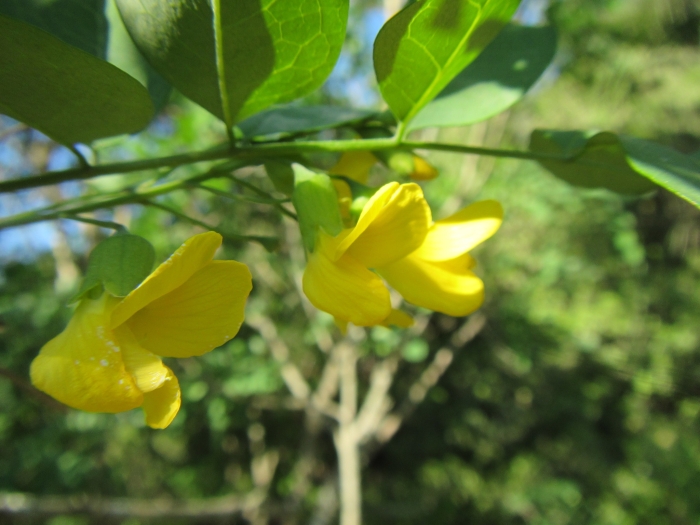Wild Laburnum
(Calpurnia aurea)
Wild Laburnum (Calpurnia aurea)
/
/

douglaseustonbrown
CC BY-SA 4.0
Image By:
douglaseustonbrown
Recorded By:
Copyright:
CC BY-SA 4.0
Copyright Notice:
Photo by: douglaseustonbrown | License Type: CC BY-SA 4.0 | License URL: http://creativecommons.org/licenses/by-sa/4.0/ | Rights Holder: douglaseustonbrown | Publisher: iNaturalist | Date Created: 2020-02-03T17:09:12-08:00 |

























Estimated Native Range
Summary
Calpurnia aurea, commonly known as Wild Laburnum or African Laburnum, is a deciduous to semi-deciduous tree native to diverse habitats including coastal forests, riverine woodlands, and open savanna areas in Southern Africa, from the southeastern Cape through to the central Transvaal and eastern Zimbabwe. It is generally a small tree, reaching up to 13 feet (4 meters) in open areas, but under forest conditions, it can grow taller, up to 49 feet (15 meters). The tree is characterized by its rounded crown and bears sprays of bright yellow, pea-like flowers which are highly ornamental and appear in abundance from spring to early summer. The leaves are pinnately compound with a terminal leaflet, adding to its fine-textured foliage. After flowering, it produces thin, papery pods that are approximately 4 inches long.
Wild Laburnum is valued for its showy flowers and adaptability to different environments. It is used in Southern African gardens for ornamental purposes, including urban planting and as a specimen tree in smaller gardens. It prefers full sun to partial shade and requires moderate water, thriving in well-drained soils. While it is not commonly known for severe pest or disease problems, it can be susceptible to root rot if overwatered. This species is also used in traditional medicine and as a source of yellow dye.CC BY-SA 4.0
Wild Laburnum is valued for its showy flowers and adaptability to different environments. It is used in Southern African gardens for ornamental purposes, including urban planting and as a specimen tree in smaller gardens. It prefers full sun to partial shade and requires moderate water, thriving in well-drained soils. While it is not commonly known for severe pest or disease problems, it can be susceptible to root rot if overwatered. This species is also used in traditional medicine and as a source of yellow dye.CC BY-SA 4.0
Plant Description
- Plant Type: Shrub, Tree
- Height: 6-12 feet
- Width: 6-12 feet
- Growth Rate: Moderate
- Flower Color: Yellow
- Flowering Season: Summer
- Leaf Retention: Deciduous
Growth Requirements
- Sun: Full Sun
- Water: Medium
- Drainage: Medium
Common Uses
Bee Garden, Bird Garden, Border Plant, Butterfly Garden, Low Maintenance, Potted Plant, Showy Flowers
Natural Habitat
Coastal forests, riverine woodlands, and open savanna areas
Other Names
Common Names: Spray Calpurnia, African Laburnum
Scientific Names: , Calpurnia aurea, Calpurnia aurea, Podalyria aurea, Sophora aurea, Virgilia aurea,
GBIF Accepted Name: